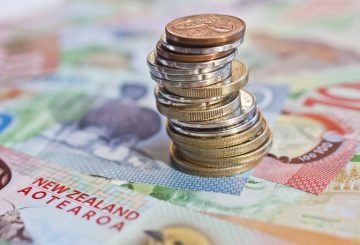ウェリントンの企業の中には、アマゾンの指示に従い、労働者に在宅勤務をやめるよう政府に求めているところもあります。Kiwibankの最近のレポートでは「冷え切った」と言われている経済の改善に役立つ可能性があると彼らは考えている。
ウェリントンでは、労働力の4分の1近くが公務員で、残りの 16% が地方自治体や教育機関で働いています。企業は公務員にオフィスに戻って来てもらい、人の往来を増やし、苦境に立たされている企業を支援したいと考えています。
地元の飲食店に農産物を販売するサンジャイ・ダヤル氏は、街が静かすぎると感じています。彼はかつてキューバストリートがどれほどにぎやかだったかを思い出し、自分の店をもっとにぎやかなエリアに移す計画を立てています。彼は、企業が都心部では人の往来に対して支払う家賃が高くなっているが、その家賃はリモートワークのおかげで大幅に下がったと指摘している。
ダヤル氏は、政府職員がオフィスに戻れば、都市が復活すると考えています。彼は、誰もいない通りと地元企業の衰退にはつながりがあると考えている。フィデルズ・カフェのオーナーであるロジャー・ヤングもこれに同意し、彼のレストランは最近、25年ぶりの低迷期を迎えたと指摘した。彼は、街の雰囲気を盛り上げるために、政府に労働者の帰国を促すよう求めている。
ヤング氏は、在宅勤務は孤立を招く可能性があるため、オフィスに戻ることで生産性とメンタルヘルスが向上すると付け加えています。Caffeined DragonsのオーナーであるRhys Kaanは、公務員が戻ってくることは助けになると考えていますが、公共部門での人員削減はすでに企業に打撃を与えていることを認識しています。
他の地元企業は、より多くの人々が直接働く郊外に移ることで適応している。Pickle and Pieのミアとティム・トレーシーは、市内の顧客が自宅にいることが多いため、市内ではなくンガイオにベーカリーをオープンしました。
レストラン協会会長のマイク・イーガンは、オフィスにいる人の数が減ると企業の収益が損なわれると指摘しています。最近のレポートによると、ウェリントンのホスピタリティ業界の売上高は2024年初頭に 5.5% 減少しましたが、全国の売上高は増加しています。
リモートワークについては議論がありますが、雇用弁護士のスーザン・ホーンズビー・ゲルク氏は、従業員を強制的に復帰させるかどうかは契約次第だと述べています。契約書に仕事はオフィスで行わなければならないと記載されている場合、雇用主は返品を要求するかもしれません。しかし、従業員が何年もの間在宅勤務を続けている場合は、これが受け入れられた慣行になったと主張するかもしれません。





























































